S&C Meeting, June 11, 2014
Updated on Wed, 2014-06-11 10:54. Originally created by smirnovd on 2014-06-10 17:22.
The Goal
- Verify implemented Sti geometry
- Match position and material to the original TGeo geometry
Tool
- Reminder: Sti track is a collection of track nodes. A node is set of track parameters (position at midsection, direction, energy losses...) at Sti volumes traversed by the track
- Simulated tracks can be used to scan a detector region
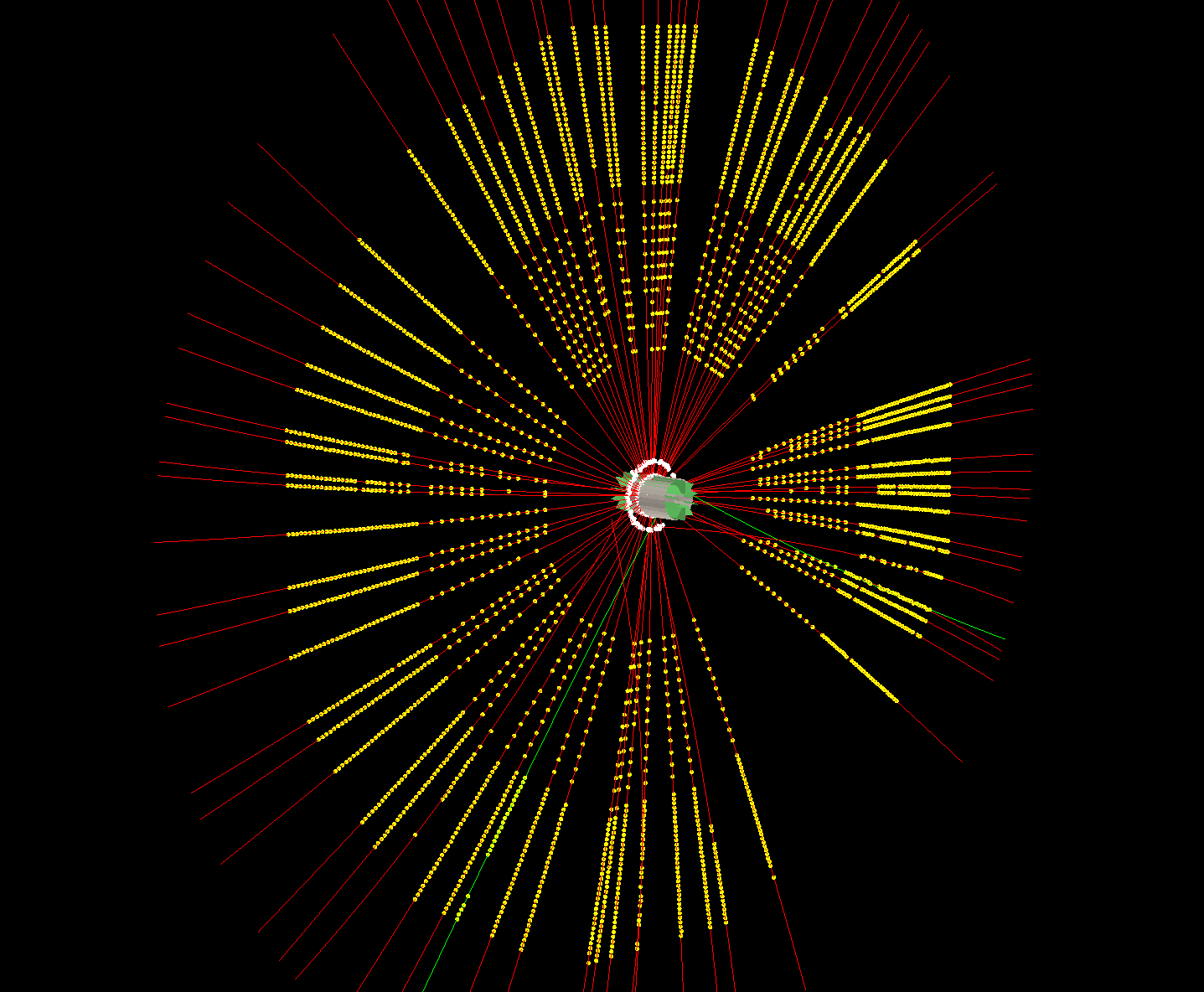
- For easier interpretation of 3D projections it is easier to use tracks perpendicular to the beam at different z coordinates
-
$stiscan -h Program options: -h [ --help ] Print help message -f [ --hftree-file ] arg Full path to a ROOT file with hftree OR text file with a list of ROOT files containing the same -p [ --volume-pattern-flist ] arg Full path to a text file with Sti/TGeo volume names $stiscan -f ../offline/hft/tests/hftree_list.txt -p ../offline/hft/tests/volumes.txt

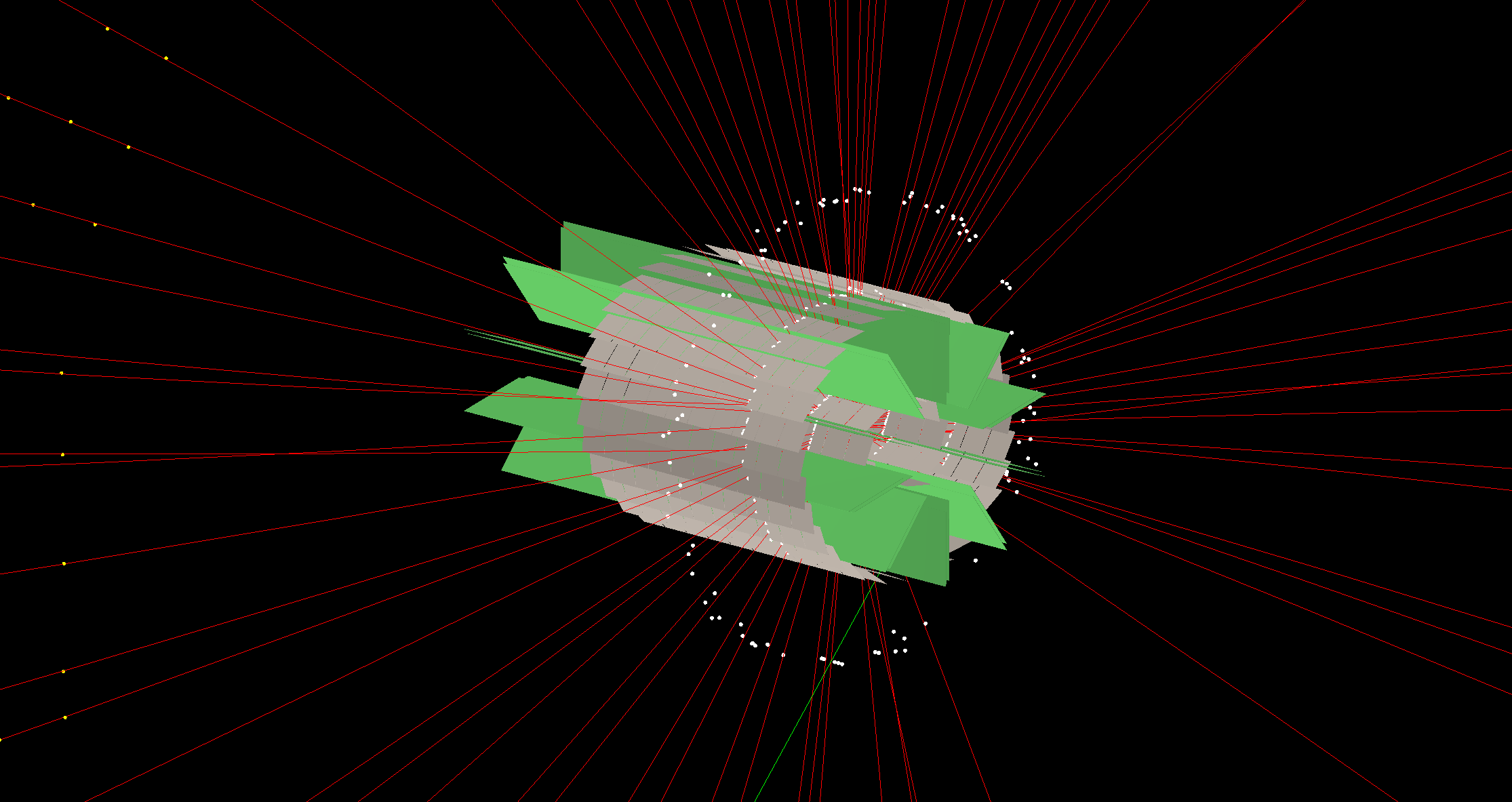
- Initial set of histograms
- Simulated 11 sets (z = range(-5, +5, 1) cm) of 10 events with 100 tracks per event
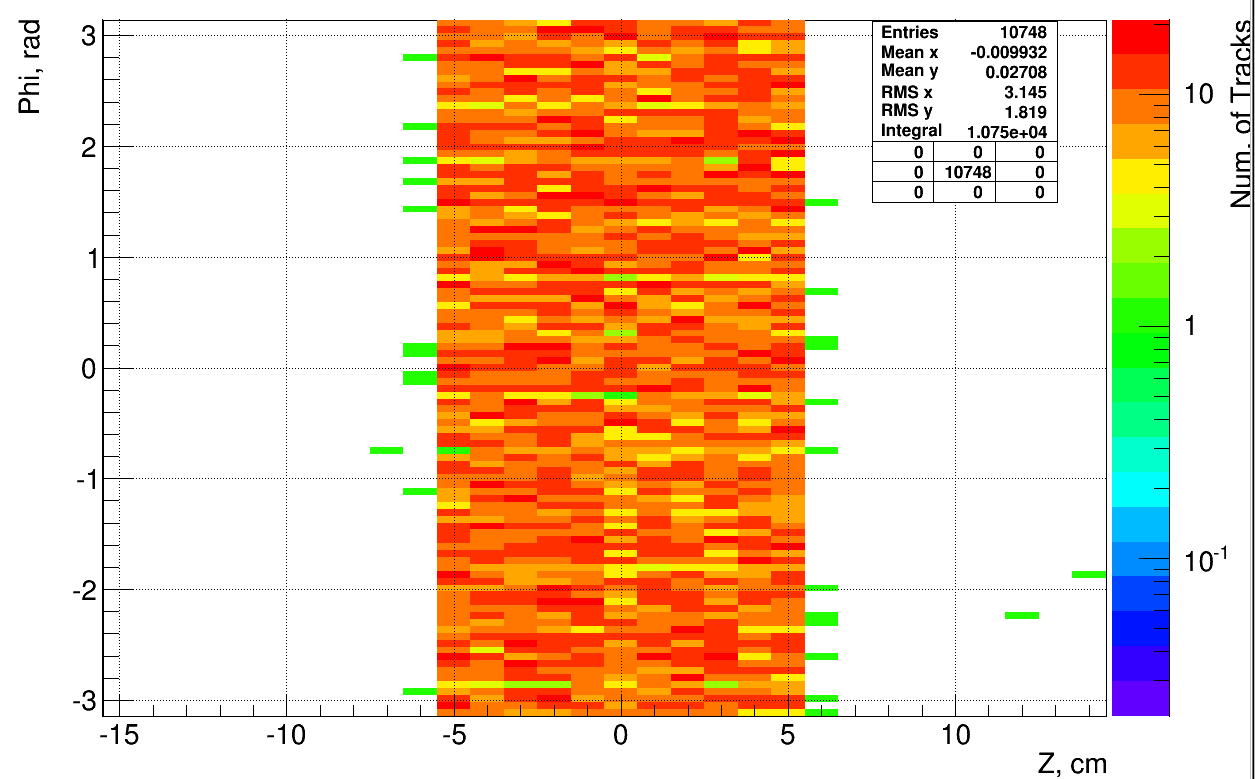
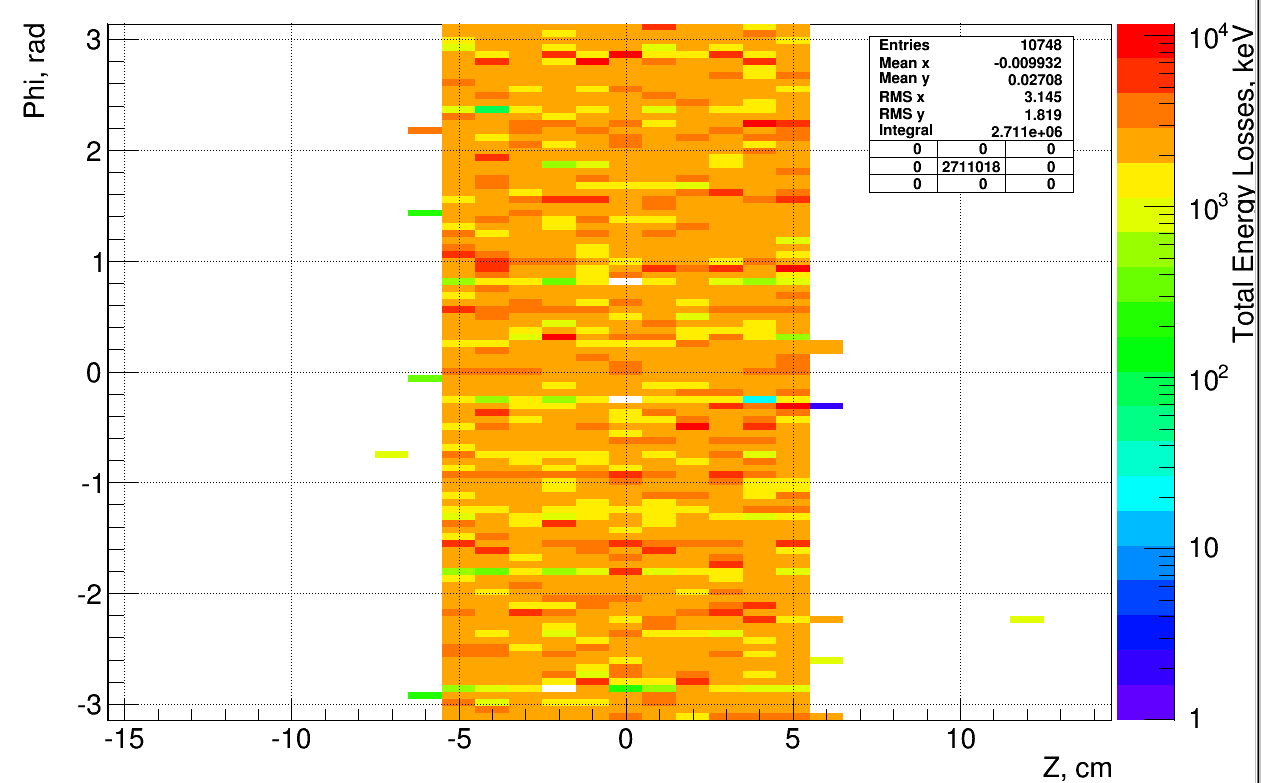
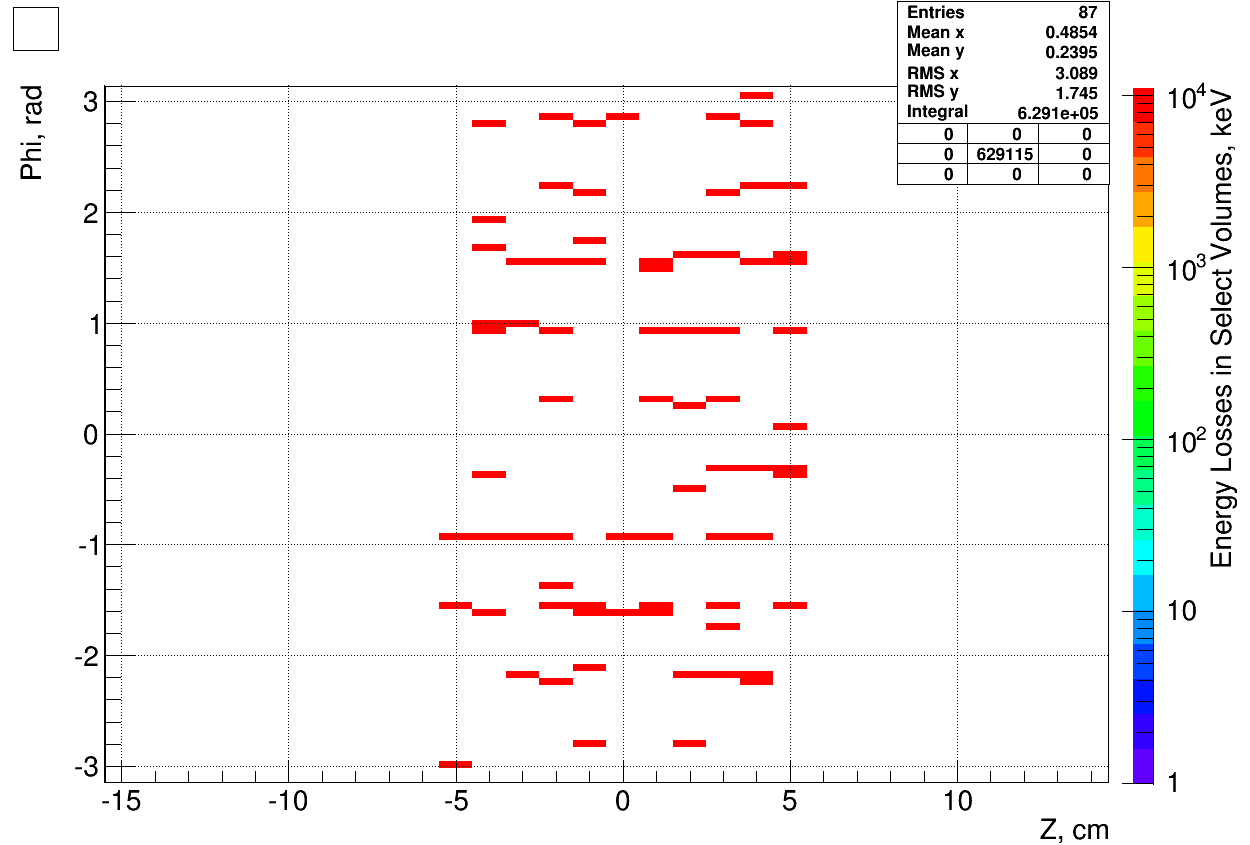
(Mainly minor) Remarks
- 100 tracks in a r-phi plane might be a bit too dense for Sti algorithm to reconstruct efficiently. This may add to tracking inefficiency and explain some of the incorrectly reconstructed tracks
- If this is the case one can generate more events with less tracks per event
- Turning off magnetic field may further help with interpretation of the results
- Less energetic particles can be generated instead of 5 GeV ones
- Need more statistics. With current binning have only 10 tracks per bin
- This may not be enough to see features of the considered geometry
- It is important to simulated tracks in the region of interest
»
- smirnovd's blog
- Login or register to post comments
